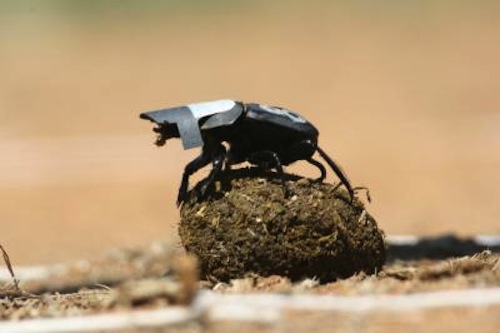Weird Science rolls its dung while staring at the stars
Ars Technica » Scientific Method 2013-02-10

Sitting in the dung, staring at the stars. Most of us go out of our way to avoid a steaming pile of feces. But not dung beetles—these insects pile right in to get their share. The fierce competition is what forced the evolution of the dung beetle's most notable habit: creating a ball of excrement, and rolling it away from the pile in a straight line. That's easy to do when the Sun's out, but the beetles also manage to go straight at night. By fitting the beetles with the stylish little helmets shown above, researchers confirmed the animals go straight at night thanks to their ability to see the stars. And that's stars, plural—they don't rely on any one in particular, but instead navigate using the Milky Way as a whole.
Researchers skip the chicken, create a turduck (but it's not what you think). This bit of science is about as weird as it gets. It's possible to make a chimeric animal by grafting embryonic cells from one species into the embryo of another. So, for example, it's possible to see where adult organs originate by transplanting defined regions of a quail embryo into a chick, and see where the quail cells end up. But I'm not sure it ever occurred to anyone to ask "hey, I wonder if you could mix a turtle and a duck?"
Spurred by the eternal question—"the feasibility of producing chimeras between animals of two different classes remains unclear"—researchers at the China Agricultural University decided to find out. And, given that it's an agricultural university, they used two species that are generally used for food: Chinese soft-shelled turtle and the Peking duck. Cells from both species ended up in the brain, spine, heart, and other organs of the developing embryo. The animals that hatched looked like turtles, but had indications of duck cells in a variety of tissues—including the gonads. No word on what happens when two of these chimeras mate.
Read 5 remaining paragraphs | Comments